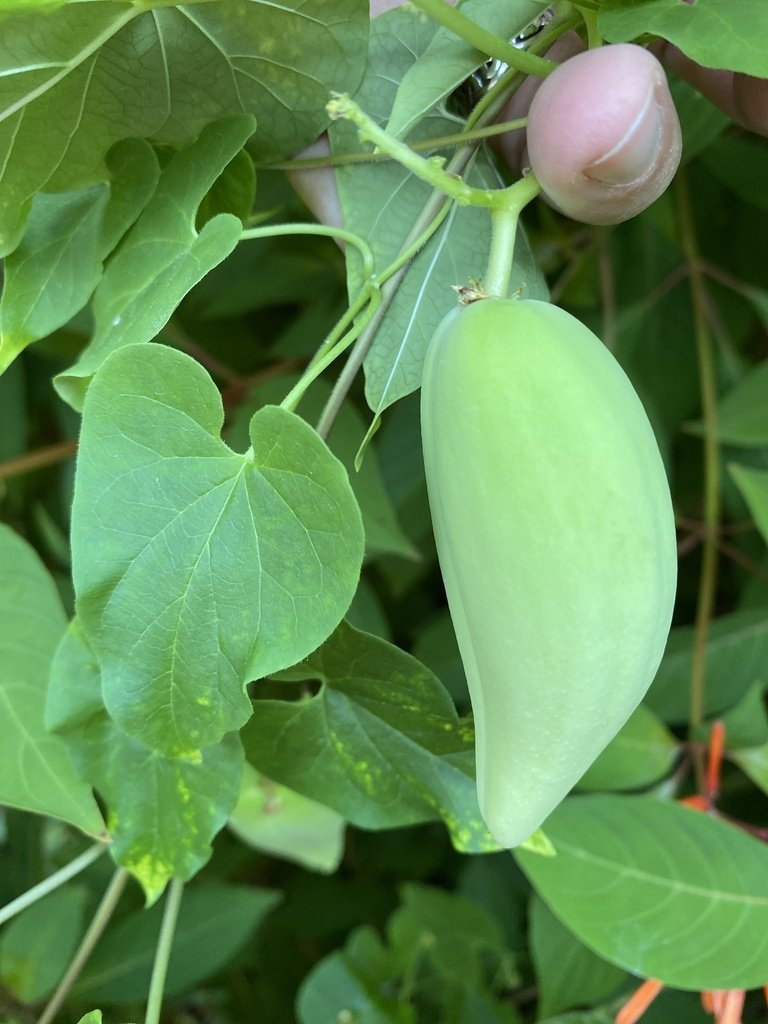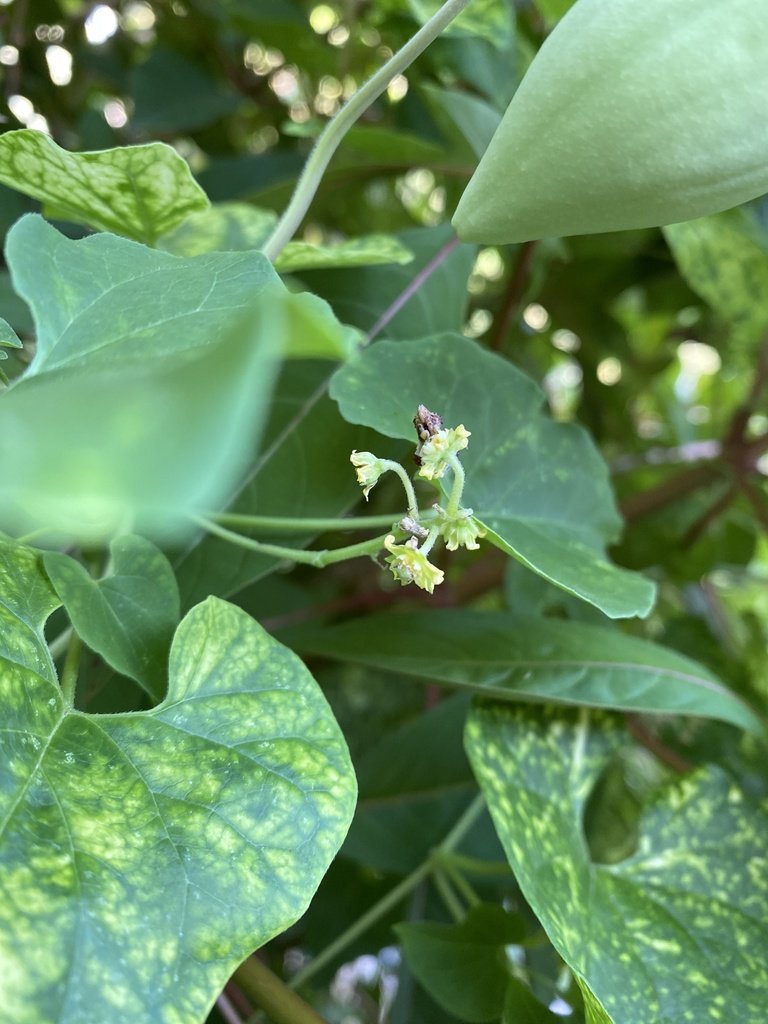Lately I, very happily, have been having the same conversation over and over again with lots of friends and Red Wheelbarrow customers. There’s a peculiar plant lurking in many yards that is being mistaken for a pest. I most recently saw it growing on a railing at the Becker Green Classroom where I did a consultation last week about tree planting. Even though we were talking about trees I took a minute to point out their big crop of Talayote. I still can’t pronounce “Talayote” but I will get there.
Talayote, the common name for Cynanchum unifarium, is the most underrated plant found around Austin and most of Texas. Often mistaken for bindweed and other members of the Morning Glory family, this native vine is in the Milkweed family aka the Asclepiadaceae. Yes, there are milkweed vines. In my experience, they are the most common milkweeds around town. If you are a butterfly or wildlife gardener, you definitely need to know this plant!
You may have heard that the famous Monarch Butterfly, Danaus plexippus, is listed as an endangered species by the by the International Union for Conservation of Nature. It hasn’t been listed as an endangered species on the US Federal Endangered Species list yet, but I understand that is in the works.
Adult monarch butterflies drink nectar from many different garden plants including mistflowers and asters. But the caterpillars, the baby Monarch larvae that will grow up to become monarch butterflies, can only eat plants that are in the Asclepiadaceae family.
Each year, Monarchs complete a bewildering multi-generational migration across North America between Canada and Mexico. The original butterflies leave their overwintering homes in Mexico and start their journey north, laying eggs on milkweed plants and then dying along the way. Their grandchildren are born in Canada and the Northern U.S. In the late summer the grandbabies, now transformed into adult butterflies, find their way back to the same overwintering site in Mexico. Some of them even fly across the Great Lakes, landing on boats to rest along the way. HOW DO THEY KNOW WHERE TO GO?!?!? They do not have brains! Butterfly epistemology, anyone?
I learned about this migration when I watched this 2011 episode of Nova, and it ignited a passion for butterfly gardening in my heart, especially since I made a similar migration in my life, growing up in Cleveland, OH and landing in Austin, TX. I remember seeing the big orange butterflies in my mom’s garden when I was growing up, but I had no idea they migrated. I remember eating lunch outside of the Perry Casteneda Library when I worked there in autumn 2001 on the University of Texas campus. I saw big groups of Monarchs soaring high above the building and felt perplexed. Where were they going? How could a fumbly bumbly flutter-by butterfly suddenly start soaring?
Their migratory path and the geography of our continent concentrates their numbers into dense populations traveling through Texas, so it is crucial for Texas gardeners to preserve milkweed plants for their little baby caterpillars to munch on.
Many passionate butterfly gardeners have braved the local plant sales and thrown elbows in a smash-mouth rush to grab milkweed plants, only to be disappointed when the plants die in their new homes. Milkweed plants are notoriously hard to propagate and grow in nursery culture and they often do not survive transplanting. It is also really hard to get the seeds to sprout in the garden.
Most gardeners have forgotten the most important step when setting up a garden: identify the plants you already have before you start tearing them out. Plants that have “volunteered”, a term I use for plants that grew without humans planting them, can be some of the most valuable plants in the landscape. Talayote is at the top of the list of wonderful volunteer plants, and it seems to be having a banner year, because I am seeing it everywhere.
I found it in my backyard in 2021, tangled up with perennial morning glory growing all over a firebush. Fortunately, due my 20 years of plant ID experience, I noticed it was different from the morning glory. I still couldn’t ID it on my own so I added it to INaturalist. I was delighted to find a native volunteer milkweed thriving in my yard where so many milkweeds came to die previously. I built a trellis for it and it has been thriving ever since.
I added some photos here for you to study. Talayote is different from bindweed and other morning glory vines several ways. 1. When you tear a stem or leaf Tayalote has milky sap, like most members of the milkweed family. That is where they get their name. 2. Tayalote has small clusters of yellow flowers, not big showy flowers like morning glory. 3. The heart-shaped leaves of Talayote are more open at the top, with space between two lobes. 4. Talayote has a big seed pod that will split in two when ripe and dried. The seeds inside will be attached to fluff to carry them away on the wind.
Talayote leaf. Some of the plants I have seen around town, including the ones in my yard, have yellow spots on the leaves. I don’t know why.
Talayote seed pod. This one is still green and young, not ready yet.
Talayote flower- it’s not showy. Note
Learn more about butterflies by listening to this episode of the Horticulturati podcast:
And if you haven’t seen this movie yet, you gotta.



